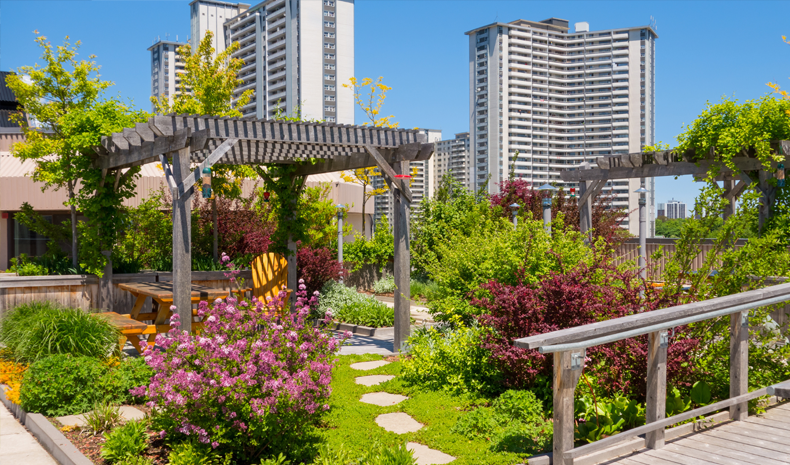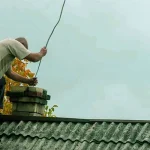The Hidden Impact of Rooftop Gardens in Arlington: Are You Inviting Pests In?
Imagine walking underneath the sun, navigating softly through Clarendon, and seeing steel and glass buildings with grungy, square footprints and jade green bits looking over from high-end urban condos. The rooftop gardening trend is growing in Arlington faster than tomatoes in the summer heat.
These high-rise gardens serve a purpose beyond just providing a picturesque backdrop for Instagram shots. They are cleaning our air, decreasing energy expenses for buildings, and providing a quiet refuge from the urban landscape for residents. But what a lot of Arlington gardeners may not know is that rooftop paradise may, at a moment’s notice, become a welcoming path to the invitationless.
In this post, we will tell you the reasons why pests are so attracted to rooftop gardens, when you can recognize (or prevent!) an issue, and actionable tips to ensure your rooftop garden flourishes without the creeps! We will also highlight how professionals, such as Greenpestservices.net can come to the rescue!
Pest Risks for Rooftop Garden Owners
Rooftop walls are perfect for aphids as they offer both constant sunlight and protection from the wind. These little green bugs can congregate on the stems and leaves of your plants, sucking the literal life out of your veggies and flowers. Mosquitoes are another primary concern. These unwanted guests not only irritate you, but they can also carry diseases that can be detrimental to you and your family members.
Preventive Tips for Pest-Free Rooftop Gardens
Innovative Watering Strategies for Arlington’s Climate
With Arlington weather, we have to water strategically. Avoid saucers that trap water; use drip irrigation or self-watering containers to remove potential breeding grounds. Watering in the early hours of the day so that humidity levels do not rise, which attracts pests.
Plant Selection and Placement
Maintain proper spacing between your plants in order to allow for good air circulation. Pests adore the humid microclimates produced by densely crowded plants. Your rooftop gets tons of light with Arlington County’s average of 230 days of sunshine a year, use that to your advantage and space plants out rather than planting in a tight hedge.
Understanding Why Rooftops Attract Unwanted Visitors
A rooftop garden is a little ecosystem where pests are drawn. Water sources, food (your plants), and shelter are the components of a real estate package for their world. Rooftops usually have fewer natural pest predators than ground gardens, allowing populations to flourish unabated.
When to Involve a Local Expert
Most Arlington homeowners begin with DIY methods when they encounter pests. You can use neem oil sprays for aphids, citronella plants for mosquitoes, or natural insect repellents for ants. Although these remedies can relieve your roof leaks in the short term, the outside roof environment is different, which makes long-term control of roof leakage a little more challenging.
That is why so many Arlington rooftop gardeners call in the professionals, local ones who know how to address above-ground pest problems typically. Green Pest Services has assisted residents in the early detection of infestations and treatment with low-impact treatments that are safe for edible plants and pollinators.
Preventive Tips for Pest-Free Rooftop Gardens
Innovative Watering Strategies for Arlington’s Climate
The weather conditions in Arlington require a strategic approach to watering. Look in your containers following one of Arlington’s frequent summer storms. Remove any water collected in the next 24 hours to avoid the proliferation of mosquito larvae. Use mosquito dunks for permanent water features. You can use them around plant life without concern, but they will decimate mosquito larvae.
Plant Selection and Placement
Pick companion plants that are natural pest repellents. Marigolds, basil, and lavender smell wonderful and ward off the usual rooftop pests. Plants should be planted far apart to allow air to move through. Overcrowded plants generate humid microclimates ideal for pests.
Regular Maintenance That Makes a Difference
Check for little holes in the leaves, webbing seen on the stems, or little bugs hovering under the plants. Early detection helps to avert major infestations requiring serious cures. Remove debris and fallen leaves on a regular basis.















